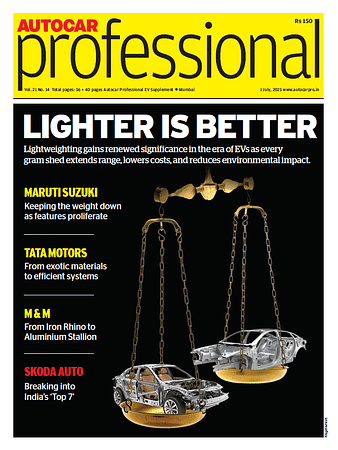Tech Talk: Why the car industry is turning to steer-by-wire
With steer-by-wire, the only link between the steering wheel and the front wheels is an electromechanical actuator.
The Nio ET9 now comes with a ZF full steer-by-wire system that has no mechanical connection between the road wheels and the steering wheel.
It’s among the first production cars to be fitted with steer-by-wire, but not the first. Infiniti tried it with the Q50 as far back as 2013.
The Toyota bZ4X is also due to get it at some stage in the future. But the writing has been on the wall about steer-by-wire technology for quite a few years and its mainstream inception has crept even closer with the wide-scale adoption of electric power steering.
The ZF system is based on its Cubix software suite, developed specifically for by-wire steering, braking and damping systems.
Some electromechanical rear-axle steering systems are already by-wire activated and ZF’s own Active Kinematics Control comes in two versions: one with a single actuator controlling both rear wheels and another with individual actuators, one for each rear wheel.
 In ZF's steer-by-wire steering system, a mechatronic actuator between the wheels is the only source of steering power. There is no longer a mechanical connection between the steering wheel and steering gear.
In ZF's steer-by-wire steering system, a mechatronic actuator between the wheels is the only source of steering power. There is no longer a mechanical connection between the steering wheel and steering gear.
With steer-by-wire, the only link between the steering wheel and the front wheels is an electromechanical actuator, which senses the steering wheel rotation, converts it to an electrical signal and passes it to a controller that in turn actuates the steering.
More than that, the actuator can generate torque as well and this enables it to deliver what ZF claims is the natural steering feedback from the road that you might get with a mechanical system.
Experienced test engineers can calibrate the system to provide different ratios of steering on the fly, depending on the driving situation.
For instance, if the driver selects Sport mode, the steering could become sharper in its response, with fewer turns lock to lock. It could do the opposite at higher speeds, emulating more turns lock to lock to give greater straight-line stability.
These features exist in more conventional power steering systems already, but mechanically. Honda’s Variable Gear Steering, launched on the S2000 back in 2000, is an early example.
But with steer-by-wire, such features become simpler to realise because the characteristics are set in software. In theory, that should make it easier for engineers to tune the systems during development because of the almost infinite number of changes that could be made to get the steering feel and response just right.
It also means that engineers at individual car manufacturers can easily be involved in the tuning process to create steering attributes that best represent a particular brand.
Realistically, attributes could be varied across a model range (say, from a base version to a GTI) through software changes but without the need for additional hardware.
Unsurprisingly, ZF sees a major opportunity with steer-by-wire if and when fully automated cars become a reality.
In such a case, systems could also include steering wheels that retract into the dash when the car takes over complete control, freeing up more space for the driver.
ALSO READ:
Tech Talk: Honda and Valeo drive affordable ADAS with Honda Sensing
RELATED ARTICLES
Auto Giants Explore Hybrid Strategy as EVs Hit Speed Bumps
Slower-than-expected EV adoption, tight CAFE norms and ever-present efficiency demands are giving hybrids a second wind ...
Continental Taps India as Global Hub for R&D and Manufacturing
Continental’s spin-off of its automotive business into AUMOVIO marks a strategic shift, placing India’s engineering and ...
India's EV Story: Promise, Progress, and Challenges
Amid the fanfare of new launches and soaring expectations, mainstream buyers remain hesitant.





 27 Mar 2025
27 Mar 2025
 3438 Views
3438 Views





 Ketan Thakkar
Ketan Thakkar


 Shahkar Abidi
Shahkar Abidi


